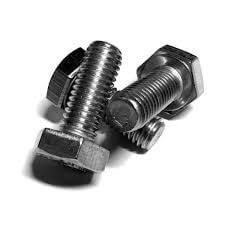What is the Difference Between A2 and A4 Stainless Steel?
Stainless steel comes in different varieties, commonly referred to as grades. The most common grades that we come across in the fasteners industry are called A2 and A4.
| STAINLESS STEEL HEADS & THREADS |
 |
The key differences (and similarities) are as follows.
A2 Stainless Steel
A2 stainless steel is often referred to as 304 or 18/8 Stainless. 18/8 actually refers to the amount of chromium and nickel in the alloy - 18% chromium and 8% nickel.
A2 stainless is the most common type of steel used for the manufacture of fasteners and is suitable for general use.
Aside from fasteners, it is also often found in many household products and appliances including saucepans, coffee pots, cookers, fridges and kitchen sinks. It is also frequently used in the dairy, brewery and food producing industries.
A4 Stainless Steel
A4 Stainless is often referred to as 316 or 18/10 stainless. As in A2 above, the numbers 18/10 refer to the chromium and nickel content- 18% chromium and 10% nickel.
A4 stainless is often used in marine or chemical environments as it has greater corrosion resistance than A2.
The chemical composition of both A2 and A4 stainless steel are almost identical with the most notable differences being the higher nickel content and the addition of Molybdenum in A4. Molybdenum is a silvery white metal that is highly corrosion resistant, very ductile and has an extremely high melting point.
There can also be Titanium present in A4 stainless at the option of the manufacturer.
Typically, A4 grade stainless steel costs slightly more than A2 because of its enhanced chemical and production properties. The extra cost can be justified, however, because hardware made of A4 stainless steel is extra resistant to tarnish and corrosion, enabling it to last a very long time.
A4 grade fixings and fasteners offer excellent corrosion resistance. They are the standard choice for many applications in the construction, automotive, marine and engineering sectors.
Common Properties
Both A2 and A4 grades are classed as Austenitic stainless steel (sometimes called the 300 series). This means that they have high chemical
resistance but cannot be hardened by heat treatment. They can be hardened by cold working.
Both A2 and A4 stainless steels are mostly non-magnetic. Some magnetism can be induced by the cold working process and also by welding.

